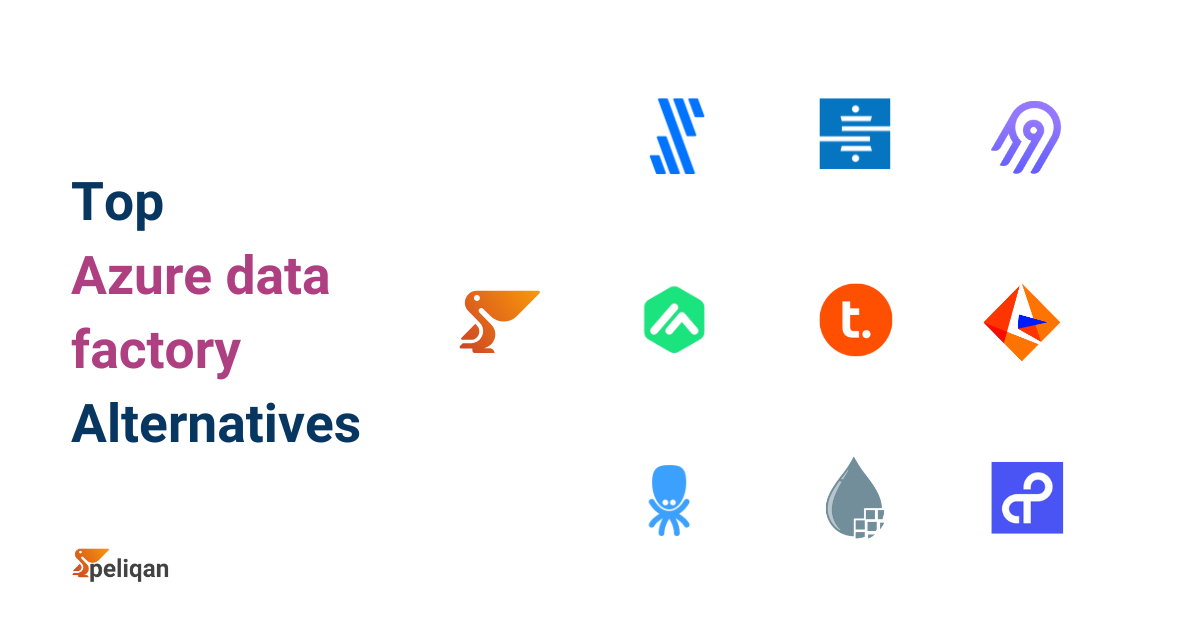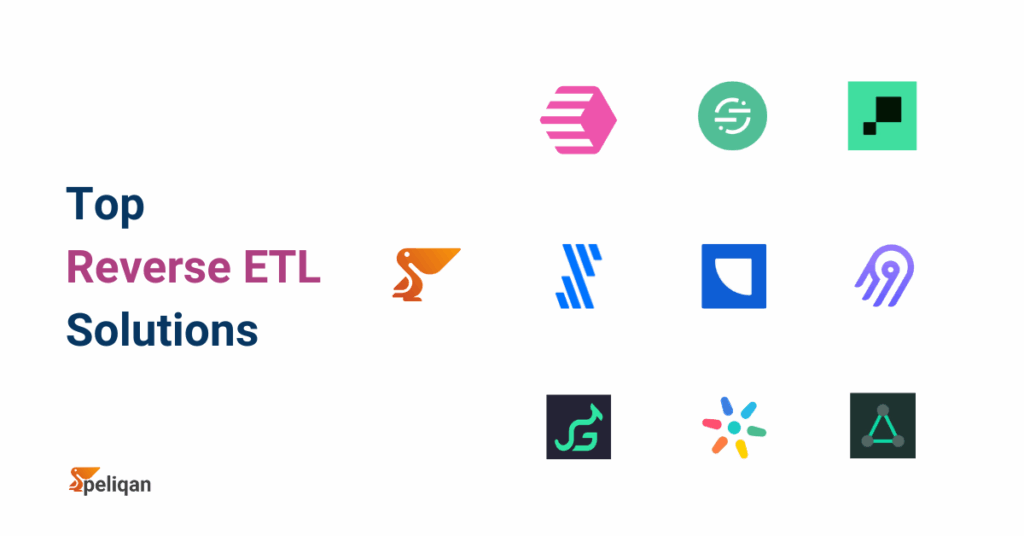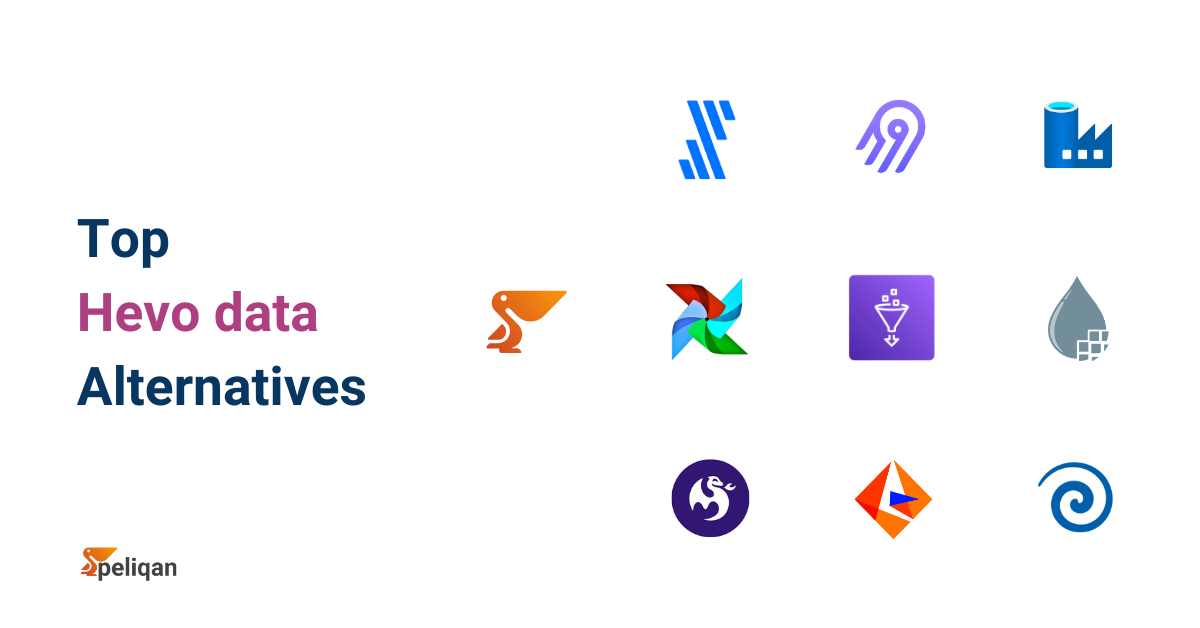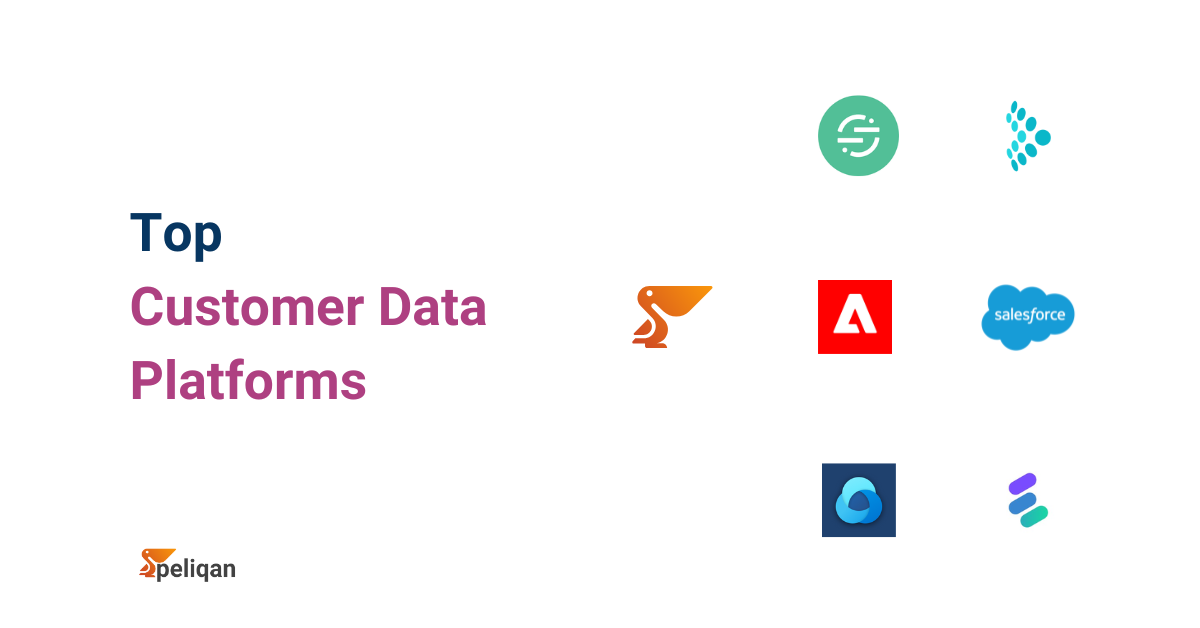Reverse ETL Tools: Explained
In today’s data-driven world, businesses are drowning in information. Data warehouses brim with valuable insights, but traditional ETL (Extract, Transform, Load) processes often leave this data stagnant. Enter reverse ETL, a revolutionary approach that flips the script on data utilization.
This comprehensive guide dives deep into the world of reverse ETL tools, exploring the top 10 options for 2025 and how they can empower your organization. We’ll uncover the power of data activation, delve into key features, and equip you with the knowledge to choose the perfect tool for your needs.
What is Reverse ETL?
Imagine a data warehouse overflowing with customer behavior, marketing campaign results, and sales figures. Valuable, right? But what if this data remains siloed, inaccessible to the teams that need it most? Here’s where reverse ETL shines.
Reverse ETL extracts data from your data warehouse and strategically injects it back into operational systems like CRMs, marketing automation platforms, and support tools. This data activation process makes critical insights readily available where it matters most, empowering data-driven decision making across your organization.
Why Use Reverse ETL Tools?
Think of reverse ETL tools as the missing link between your data warehouse and the tools that power your business. Here are just a few reasons why you should consider incorporating them into your data strategy:
- Improved Decision Making: With customer data readily available in your CRM, sales teams can personalize outreach strategies for better engagement. Marketers can leverage website behavior data to optimize campaigns. Real-time data empowers informed decision making across departments.
- Enhanced Customer Experiences: By activating data in your marketing automation platform, you can personalize customer journeys with targeted messaging and recommendations. This fosters stronger customer relationships and boosts loyalty.
- Streamlined Operations: Data from your data warehouse can streamline internal workflows. Imagine automatically populating support tickets with relevant customer information, eliminating the need for manual data entry.
- Increased ROI: Reverse ETL helps you leverage the full potential of your data investment. By activating data, you can optimize marketing campaigns, improve sales conversions, and personalize customer experiences – all leading to a better return on investment.
Now, let’s look at each one of the above mentioned reverse etl tools in detail.
Top 10 Reverse ETL Tools for 2025
The reverse ETL landscape is brimming with innovative solutions. Here’s a closer look at the top 10 tools to consider in 2025:
1. Peliqan.io: Comprehensive Data Integration and Activation Platform

Peliqan.io is an advanced, all-in-one data platform designed to address the full spectrum of data management challenges. It offers a unified solution for data integration, transformation, and activation, enabling organizations of all sizes to harness the power of their data without extensive technical expertise.
Connect: Peliqan provides seamless integration with over 100 SaaS applications, databases, and file systems, centralizing data from disparate sources into a cohesive ecosystem.
Transform: Leveraging SQL and low-code Python, Peliqan offers robust data transformation capabilities. Users can efficiently cleanse, model, and prepare data for analysis and downstream applications.
Activate: Peliqan extends beyond traditional analytics, facilitating data-driven actions. It enables reverse ETL, custom report distribution, API publishing, and various data activation use cases.
Key features:
- Automated ETL: Peliqan’s intelligent system creates and maintains data pipelines with minimal user intervention, streamlining the data integration process.
- Flexible Data Warehousing: Users can choose between Peliqan’s built-in data warehouse or seamlessly integrate with leading cloud data platforms such as Snowflake and Google BigQuery.
- Business User Empowerment: Peliqan offers an intuitive spreadsheet-like interface, enabling non-technical users to explore and analyze data effectively.
- Developer-Centric Tools: For technical users, Peliqan provides low-code Python scripting capabilities, facilitating advanced data manipulation, custom application development, and machine learning integration.
- AI-Assisted Analytics: An advanced AI assistant helps users generate SQL queries from natural language inputs, accelerating insight discovery.
- Robust Privacy and Compliance: Segment prioritizes data privacy and security, ensuring compliance with industry regulations like GDPR and NIS2.
- White-Label Solutions: Peliqan offers white-labeling options, allowing service providers, software companies, and agencies to deliver Peliqan’s capabilities under their own brand.
This comprehensive platform caters to a wide range of use cases, from SaaS data integration and business intelligence to custom data applications and white-labeled solutions for service providers.
2. Census Reverse ETL

Census has carved a niche in the reverse ETL space with its focus on simplicity and efficiency.
Key features of Census reverse ETL include:
- No-Code Interface: Setting up and managing data flows is a breeze with Census’ no-code interface. Even non-technical users can be up and running in no time.
- Popular Integrations: Census offers a wide range of integrations with popular tools like Salesforce, HubSpot, and Marketo, making it ideal for organizations heavily reliant on these platforms.
- Data Observability: Keep your finger on the pulse of your data flows with Census’ data observability features. Monitor data pipelines, identify potential issues, and ensure data quality.
- Flexible Sync Scheduling: Census offers various sync scheduling options, allowing you to control when data is updated in your operational systems.
Census shines for businesses seeking a straightforward and efficient way to activate their data without the complexities of traditional ETL processes.
3. Segment Reverse ETL

Segment is renowned for its Customer Data Platform (CDP) capabilities, and its reverse ETL offering is a natural extension of this platform.
Key features of Segment reverse ETL include:
- Real-Time Data Sync: Ensure your customer data is always up-to-date across all your marketing and sales tools with Segment’s real-time sync capabilities.
- Identity Resolution: Create a unified view of your customers by resolving discrepancies across different data sources. This empowers personalized marketing and sales efforts.
- Extensive Integrations: Leverage Segment’s vast library of pre-built integrations to connect your data warehouse with a wide range of operational systems.
Segment reverse ETL is particularly well-suited for businesses prioritizing a unified customer view and real-time data activation for personalized marketing and sales campaigns.
4. Hightouch Reverse ETL

Hightouch is designed to empower data teams to take control of data activation without relying on engineering resources.
Key features of Hightouch reverse ETL include:
- SQL-Based Modeling: Define complex data transformations and syncs using familiar SQL syntax, providing data teams with flexibility and control.
- Version Control: Track changes to your data models and easily revert to previous versions if needed, ensuring data integrity and collaboration.
- Audience Builder: Create and sync custom audience segments based on your data warehouse insights, empowering targeted marketing and sales efforts.
- Visual Data Mapper: Simplify the process of mapping fields between your data warehouse and operational systems with Hightouch’s visual data mapper.
Hightouch is ideal for organizations with data-savvy teams who want to take ownership of data activation and leverage the power of SQL for complex data transformations.
5. Fivetran Reverse ETL

Fivetran, well-known for its robust ETL capabilities, has expanded its offerings to include reverse ETL.
Key features of Fivetran reverse ETL include:
- Automated Schema Management: Fivetran automatically adapts to changes in your data warehouse schema, ensuring seamless data flow and minimizing manual intervention.
- Extensive Connector Library: Benefit from Fivetran’s extensive list of pre-built connectors for quick and easy setup of data pipelines.
- Reliable Performance: Fivetran is known for its reliable performance and high uptime, ensuring your data is always available when you need it.
- Data Transformation Capabilities: Cleanse and transform your data before loading it into operational systems, ensuring data accuracy and consistency.
Fivetran reverse ETL is a solid choice for organizations seeking a reliable and efficient way to move data from their data warehouse to operational systems, especially if they already use Fivetran for their ETL needs.
6. Rudderstack Reverse ETL

Rudderstack takes a unique approach to reverse ETL by focusing on event-driven architectures.
Key features of Rudderstack reverse ETL include:
- Event Stream Processing: Rudderstack processes events in real time, allowing for rapid data activation and response to user actions.
- Identity Resolution: Create a unified customer view across multiple data sources, even if customer data is fragmented across different systems.
- SDK Support: Easily integrate with web and mobile applications using Rudderstack’s SDKs, capturing user events and sending them to your data warehouse.
- Flexible Deployment Options: Choose between cloud, on-premise, or hybrid deployment to suit your organization’s infrastructure needs.
Rudderstack is well-suited for businesses that prioritize real-time data processing and want to build event-driven data activation pipelines.
7. Airbyte

Airbyte offers an open-source alternative to proprietary reverse ETL tools, providing greater flexibility and control.
Key features of Airbyte include:
- Growing Connector Ecosystem: Benefit from a growing community of developers contributing connectors for various data sources and destinations.
- User-Friendly Interface: While open-source, Airbyte provides a user-friendly interface for managing data pipelines.
- Community-Driven Development: Leverage the power of the open-source community for ongoing development and support.
- Customization Flexibility: Modify and extend Airbyte’s codebase to meet your specific requirements.
Airbyte is ideal for organizations with technical expertise and a desire to build a custom reverse ETL solution tailored to their needs.
8. Grouparoo Reverse ETL

Grouparoo is another open-source reverse ETL tool offering a user-friendly experience.
Key features of Grouparoo include:
- No-Code Interface: Easily set up and manage data pipelines without writing code.
- Real-Time and Batch Syncing: Choose between real-time or batch updates based on your data requirements.
- Extensible Plugin Architecture: Customize Grouparoo’s functionality with plugins for specific integrations or data transformations.
- Self-Hosted or Cloud Deployment: Deploy Grouparoo on your own infrastructure or leverage cloud-based options.
Grouparoo is a good choice for organizations seeking an open-source, user-friendly reverse ETL solution with flexibility for customization.
9. Hevo Data Reverse ETL

Hevo Data focuses on simplifying the data activation process.
Key features of Hevo Data include:
- Pre-Built Connectors: Quickly connect your data warehouse to popular tools and platforms with pre-built connectors.
- No-Code Data Pipeline Setup: Create data pipelines without writing complex code or scripts.
- Real-Time Data Replication: Ensure your operational systems always have the latest data with real-time replication.
- Automatic Schema Mapping: Simplify the process of mapping fields between your data warehouse and destination systems.
Hevo Data is a good option for organizations looking for a straightforward and easy-to-use reverse ETL solution.
10. Polytomic Reverse ETL

Polytomic offers a flexible approach to data orchestration, including reverse ETL capabilities.
Key features of Polytomic include:
- Visual Workflow Builder: Create complex data flows using a visual interface.
- Bi-Directional Syncing: Sync data in both directions between your data warehouse and operational systems.
- Custom Field Mapping and Transformations: Perform complex data transformations and mappings within Polytomic.
- Granular Access Controls: Securely manage access to your data and pipelines.
Polytomic is a good fit for organizations with complex data integration requirements and the need for bi-directional data flow.
Reverse ETL Tools Comparison
| Top Reverse ETL Tools | Key Features | Strengths | Pricing Model |
|---|
Peliqan.io | – Comprehensive data integration
– Built-in reverse ETL capabilities
– AI-powered data activation
– Spreadsheet-like interface | – All-in-one platform
– Business user friendly
– Rapid deployment
– Transparent pricing | Fair and transparent pricing, no hidden fees |
Census Reverse ETL | – SQL-based data models
– 85+ integrations
– Visual field mapper
– CI/CD-friendly YAML configs | – Engineering-heavy team friendly
– Git workflow integration
– Strong documentation
– Data governance roles | Destination fields-based (starts free, 50 fields) |
Segment Reverse ETL | – Customer data platform integration
– Personas SQL Traits
– Event tracking capabilities
– Audience builder integration | – Established CDP ecosystem
– Strong event collection
– Customer profile focus
– Twilio backing | Custom pricing (CDP-focused) |
Hightouch Reverse ETL | – 200+ destinations
– No-code audience builder
– SQL-based modeling
– Version control with Git | – Event-driven pipelines
– SOC 2 & HIPAA compliance
– Customer 360 modules
– Market leader in integrations | Monthly record volume-based |
Fivetran Reverse ETL | – Extension of ELT platform
– Automated data sync
– Enterprise-grade reliability
– Managed service approach | – Zero maintenance
– Established ELT expertise
– Enterprise customer base
– Proven reliability | Consumption credits (MAU-based) |
Rudderstack Reverse ETL | – Event stream processing
– 200+ cloud destinations
– Open-source architecture
– Identity resolution | – Real-time event streaming
– Customer data infrastructure
– Flexible deployment options
– Strong engineering focus | Events-based (1M events free, custom for Reverse ETL) |
Airbyte | – Open-source platform
– 600+ connectors
– Custom connector development
– Acquired Grouparoo capabilities | – Open-source flexibility
– Community-driven development
– Comprehensive data movement
– Technical customization | Free (open-source) / Cloud pricing available |
Grouparoo Reverse ETL | – Open-source framework
– No-code interface
– Real-time and batch syncing
– Self-hosted deployment | – Fully open-source
– User-friendly experience
– Code-based configuration
– Privacy-focused | Free (acquired by Airbyte in 2022) |
Hevo Data Reverse ETL | – 150+ pre-built connectors
– Real-time data streaming
– No-code setup
– Auto schema detection | – Simplified data activation
– 24/7 customer support
– Easy implementation
– Business user accessible | Event-based tiered pricing (free tier available) |
Polytomic Reverse ETL | – Real-time data synchronization
– Visual workflow builder
– Bi-directional syncing
– Custom field mapping | – Real-time capabilities
– No-code approach
– ETL platform integration
– Complex data orchestration | Starts at $500/month (custom pricing) |
Choosing the Right Reverse ETL Tool
Selecting the optimal reverse ETL tool is crucial for maximizing the value of your data infrastructure. Consider the following factors in depth:
Ease of use and user interface
- Evaluate the learning curve for both technical and non-technical users.
- Look for intuitive visual interfaces for pipeline creation and monitoring.
- Consider tools with drag-and-drop functionality for simpler workflows.
- Assess the availability of pre-built connectors and templates.
Integration capabilities
- Verify support for your specific data sources and destination systems.
- Check for native integrations with popular SaaS platforms and databases.
- Assess the tool’s ability to handle custom APIs and webhooks.
- Consider future scalability – will it support new systems as your stack evolves?
Scalability and performance
- Evaluate the tool’s ability to handle large data volumes efficiently.
- Consider support for real-time data syncing versus batch processing.
- Assess the tool’s ability to parallelize operations for improved performance.
- Look for features like incremental updates to minimize data transfer.
Data transformation and enrichment features
- Examine the complexity of transformations supported (e.g., SQL, Python, proprietary languages).
- Look for built-in data quality checks and cleansing capabilities.
- Assess support for data normalization and standardization.
- Consider the ability to enrich data with external sources or ML models.
Security and compliance
- Verify encryption standards for data in transit and at rest.
- Look for features like role-based access control and audit logging.
- Assess compliance with relevant regulations (e.g., GDPR, NIS2).
- Consider data residency options for geographically sensitive information.
Pricing model and total cost of ownership
- Compare usage-based, flat-rate, and tiered pricing models.
- Consider potential hidden costs (e.g., API calls, compute resources).
- Evaluate the need for additional tools or services to complement the reverse ETL solution.
- Factor in potential cost savings from improved operational efficiency.
Support and documentation quality
- Assess the availability and responsiveness of customer support channels.
- Look for comprehensive, up-to-date documentation and user guides.
- Consider the strength of the user community and availability of forums or knowledge bases.
- Evaluate the frequency of product updates and the vendor’s roadmap.
Monitoring and observability
- Look for robust logging and error handling capabilities.
- Assess the availability of real-time monitoring dashboards.
- Consider features for alerting and notifications on pipeline failures.
- Evaluate the depth of analytics provided on data flows and system performance.
Governance and data management
- Look for features that support data lineage and impact analysis.
- Assess capabilities for metadata management and data cataloging.
- Consider tools that offer data quality scoring and profiling.
- Evaluate support for version control of data models and transformations.
Flexibility and extensibility
- Consider the ability to customize and extend the tool’s functionality.
- Assess support for scripting languages and custom code injection.
- Look for an API that allows programmatic control and integration with other tools.
- Evaluate the ecosystem of third-party plugins or extensions.
By thoroughly evaluating these factors, organizations can select a reverse ETL tool that not only meets their current needs but also supports future growth and evolving data strategies. The right tool will seamlessly integrate into existing workflows, empower teams across the organization, and unlock the full potential of operational analytics.
Conclusion
Reverse ETL is a game-changer for businesses seeking to unlock the full potential of their data. By activating data in operational systems, organizations can drive better decision-making, improve customer experiences, and optimize business processes.
Peliqan.io emerges as the leading reverse ETL tool, offering an exceptional combination of user-friendliness, comprehensive features, and robust security. However, the diverse landscape of reverse ETL tools ensures that there’s a solution to fit every organization’s needs.
By carefully evaluating your specific requirements and exploring the top 10 reverse ETL tools discussed in this guide, you can select the perfect solution to empower your data-driven journey. Embrace the power of reverse ETL and unlock new opportunities for growth and success.
FAQ’s
1. What are reverse ETL tools?
Reverse ETL is the process of syncing data from a data warehouse to operational systems like CRMs, marketing automation platforms, and customer support tools. It’s essentially the reverse of traditional ETL, which moves data from source systems into a data warehouse. Reverse ETL tools automate this process, ensuring data consistency across your tech stack and enabling data-driven actions in real-time.
2. What is ETL versus reverse ETL?
- ETL (Extract, Transform, Load): This traditional process involves extracting data from various sources, transforming it into a standardized format, and loading it into a data warehouse for analysis.
- Reverse ETL: This process takes data from a data warehouse and loads it into operational systems, making it accessible to teams that need it for day-to-day operations.
3. What is the difference between reverse ETL and CDP?
- Reverse ETL: Focuses on moving data from a data warehouse to operational systems for activation.
- CDP (Customer Data Platform): Brings together data from various sources to create a unified customer view. While CDPs can include reverse ETL capabilities, their primary function is to create a single source of truth for customer data.
In essence, reverse ETL is a component of a CDP, but a CDP offers broader functionality for managing and activating customer data.
4. What are ETL types?
There are several types of ETL processes based on the frequency of data transfer:
- Batch ETL: Involves processing large volumes of data in batches at scheduled intervals.
- Real-time ETL: Processes data as it’s generated, providing up-to-date information.
- Incremental ETL: Processes only the changes in data since the last load, improving efficiency.
- Cloud-based ETL: Runs ETL processes in the cloud, offering scalability and flexibility.
The choice of ETL type depends on the specific requirements of your data and business

























